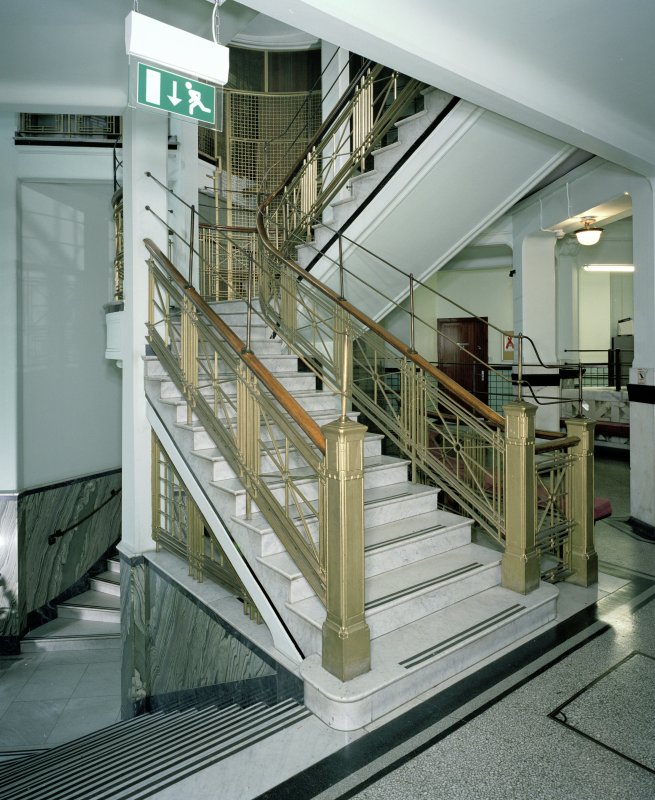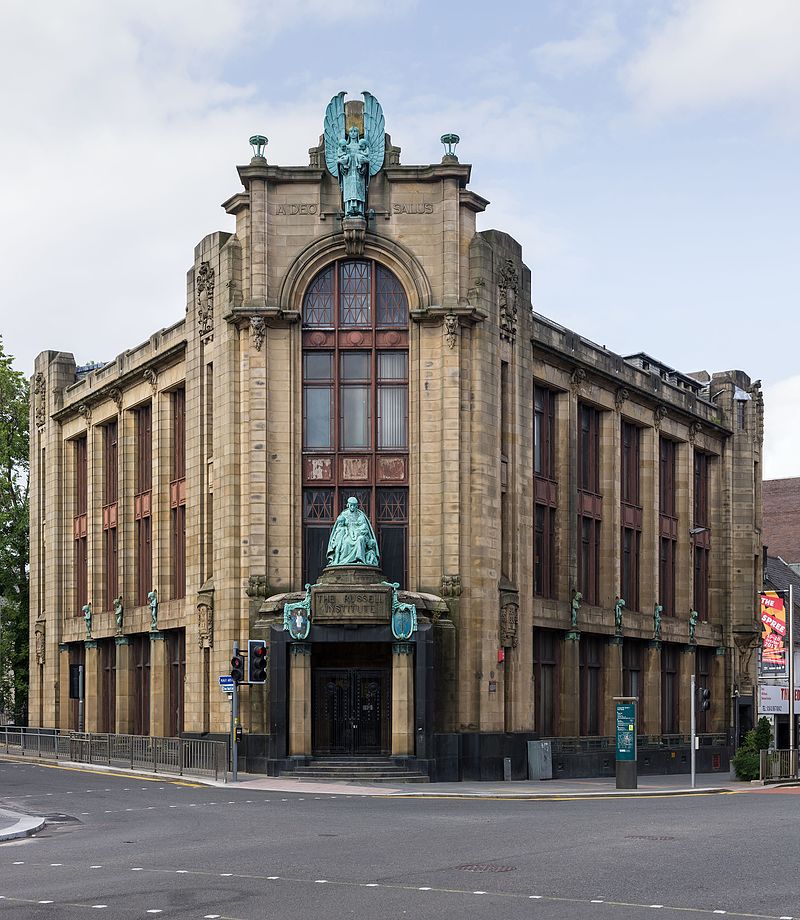The Russell Institute in Paisley, Renfrewshire, Scotland was commissioned by Miss Agnes Russell to provide a child welfare clinic as a memorial to her two deceased brothers. Designed by one of Paisley’s leading architects, J Steel Maitland, it was opened by HRH Princess Mary in 1927 and donated to the Burgh of Paisley; Agnes had died before its completion. The institute was designated a category A listed building on 3 October 2005.[1]
Until its closure in 2011, the Russell Institute continued to be used as a health centre. Following a £5 million restoration project, it was reopened as a Skills and Employability Hub in 2017.[2]
Architecture

The three-storey building is constructed as a reinforced concrete frame clad in Blaxter sandstone ashlarMasonry of squared and finely cut or worked stone, commonly used for the facing of a building.. A statue of a mother and children sits above the main entrance, and above is a gilded bronze angel carrying two babies. The building originally had bronze or wrought-iron balconies to the first-floor windows, but they were removed in about 1960.[1]
The entrance hall leads to a white marble staircase that divides into two as it rises, with a gold-painted Art-Deco metal balustrade.[1]

